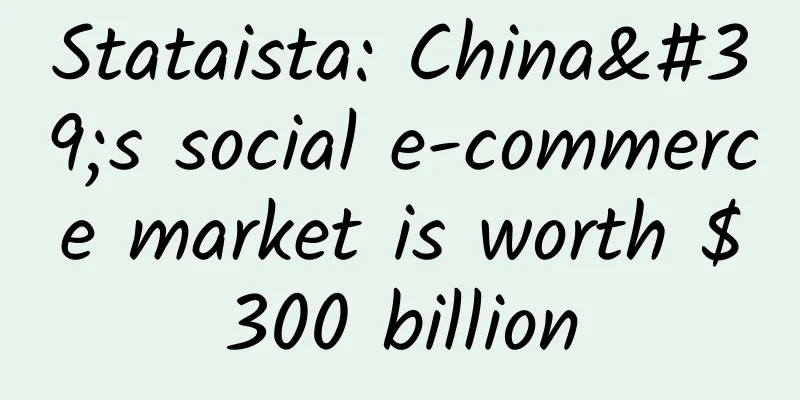Stataista: China's social e-commerce market is worth $300 billion

|
Social e-commerce in China is already a massive $300 billion market, and it’s expected to grow even further in the coming years thanks to a plethora of different services vying for the top spot in the industry. Some of the marketing concepts in Chinese social e-commerce are similar to those used by social media influencers in other countries, though a little ahead of the times. They are virtually unheard of by others in North America or Europe. Chinese social media apps have integrated into the sales process when it comes to marketing products through user-generated content. Douyin and Douyu in China may be very similar to TikTok internationally, as they are both owned by the same parent company, ByteDance. However, Douyin has had its own in-app store since 2018, where users attracted by short videos can instantly purchase the products they watch. Purchasing directly in the app or hosting product descriptions that link to other e-commerce sites are both possible, and certainly make it much easier to track sales associated with influencers and content creators. Kuaishou has adopted the same concept while focusing on smaller, less international cities, while Xiaohongshu and Mogujie focus more on pretty pictures, the Instagram equivalent of e-commerce. Since many account holders on these user-generated content platforms may not be buyers but viewers. An exception is Pinduoduo, a veteran app of the group buying concept, with 568 million monthly active users as of the second quarter of 2020. The prices offered by group buying platforms vary depending on the number of items purchased. These apps also often use WeChat to connect with friends and family. Apps are often third-party platforms that connect wholesalers or even manufacturers directly to a customer base, cutting out more than one middleman to offer deep discounts. Chinese e-commerce giant JD.com, a seller of inventory, leveraged its own logistics infrastructure as well as third-party quotes to launch its own group-buying platform, Jingxi, which had some success in 2019. Alibaba, which has always been a third-party platform, used Juhuasuan and the group-buying concept to break into another frontier of e-commerce: fresh produce. While low-cost, fast-moving goods pose challenges to global e-commerce, Chinese group buying has made inroads into smaller cities. Platforms focus not just on social connections but on neighborhood communities, thus using stay-at-home moms or convenience store owners as points of contact to send goods in bulk, minimizing last-mile costs. |
<<: Trustdata: 2020 China "Double 11" e-commerce shopping festival industry analysis report
>>: IMRG: Black Friday online sales expected to grow 45% this year
Recommend
The efficacy and function of coconut shell
I don’t know if you are familiar with coconut she...
Are tumor markers “cancer indicators”? What should we do if abnormalities are detected?
If a physical examination shows elevated tumor ma...
Hahahaha! Why does your expression look so ugly when you're asleep?
Everyone must have had ugly photos of themselves ...
The efficacy and function of fine-leaved windproof
Saposhnikovia divaricata is a frequently used med...
The efficacy and function of yellow oleander
Yellow oleander is a very common medicinal materi...
It is rare to see 51% alcohol liquor on the table. Chemists: Because it tastes a bit strange
In 1153, the Jin Dynasty moved its capital from S...
Can you eat donkey-hide gelatin cake for a long time in winter?
Women are most likely to suffer from qi and blood...
Effects and functions of roasted aconite
The study of traditional Chinese medicine is extr...
The efficacy and function of Brachiaria
Brachiaria is a very good medicinal herb. It is o...
Can fatty liver be cured by starving for two days a week? Can sun-proof clothing moisturize, cool down and repel mosquitoes? Here comes the June rumor list →
1. An outbreak of "man-eating bacteria"...
The efficacy and function of Polygonum multiflorum
I don’t know if you are familiar with Polygonum f...
The efficacy and function of Codonopsis pilosula
In fact, the occurrence of many human diseases is...
How to store fresh chicken head rice
If fresh water chestnuts cannot be eaten in a sho...
The efficacy and function of Powder
As people's living standards improve, they pa...
What are the effects and functions of Angelica and Astragalus
Angelica and Astragalus are two different Chinese...









